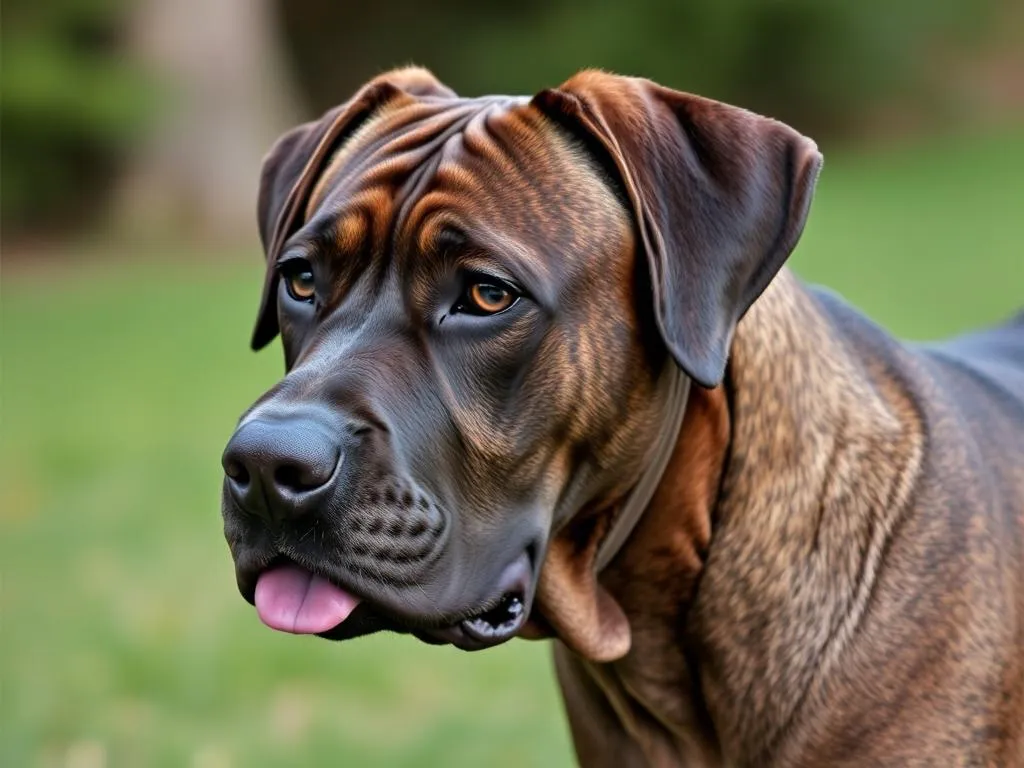
Introduction
The Cane Corso and Rhodesian Ridgeback are two distinct yet remarkable breeds, each bringing unique traits to the table. The Cane Corso, known for its muscular build and protective nature, hails from Italy, while the Rhodesian Ridgeback, originally bred in Southern Africa, is celebrated for its hunting prowess and loyalty. As mixed breeds gain popularity, understanding the characteristics of a Cane Corso Rhodesian Ridgeback mix becomes essential for potential owners looking to add a new furry member to their families.
This article aims to provide in-depth insights into this hybrid breed, covering everything from the traits inherited from its parent breeds to training, exercise, and grooming needs.
Understanding the Parent Breeds
Cane Corso
Originating from ancient Rome, the Cane Corso was primarily used for guarding properties and hunting large game. This breed is notable for its impressive size, with males typically weighing between 110-120 pounds and females around 88-100 pounds. They possess a short, dense coat that comes in various colors, including black, fawn, and brindle.
The temperament of the Cane Corso is often described as loyal, intelligent, and protective. They are known for their strong bond with their families but can be reserved around strangers. Common health issues associated with this breed include hip dysplasia, heart conditions, and certain eye disorders, making regular veterinary check-ups essential.
Rhodesian Ridgeback
The Rhodesian Ridgeback has a rich history as a hunting and guarding dog in Africa, originally bred to track lions. This breed is slightly lighter than the Cane Corso, with males weighing between 85-100 pounds and females 70-85 pounds. Their unique ridge of hair along the spine is a distinctive feature.
Rhodesian Ridgebacks are known for their affectionate and gentle nature, making them excellent family pets. They are energetic and intelligent, requiring consistent training and socialization. However, potential health concerns include hip dysplasia, dermoid sinus, and certain types of cancers.
The Cane Corso Rhodesian Ridgeback Mix
Characteristics of the Mix
A Cane Corso Rhodesian Ridgeback mix typically inherits a combination of traits from both parent breeds. The size of the mix can vary greatly, but they often fall in the range of 70 to 120 pounds, depending on which parent they take after more. Their appearance can be striking, often featuring a muscular build with a short coat that may display the ridge characteristic of the Rhodesian Ridgeback.
Grooming needs are relatively low, as this mix tends to have a short coat that sheds moderately. Regular brushing can help reduce shedding and keep the coat healthy. In terms of temperament, this mix generally inherits the loyalty and protectiveness of the Cane Corso along with the Ridgeback’s friendly and gentle demeanor. They are known to be good with children but may show a dominant streak if not properly trained.
Health Considerations
Health issues in a Cane Corso Rhodesian Ridgeback mix can reflect the common problems found in both breeds. Potential health concerns include hip dysplasia, heart issues, and certain skin conditions. Regular veterinary check-ups are crucial for monitoring health and preventing complications. Genetic predispositions should be considered, as responsible breeding practices can help mitigate some health risks.
Training and Socialization
Training Techniques
Training a Cane Corso Rhodesian Ridgeback mix requires consistency and patience. Positive reinforcement techniques work best, as this mix can be sensitive to harsh training methods. Early socialization is vital to help them develop into well-rounded dogs. Engaging in obedience training not only establishes a strong bond but also helps manage any stubbornness that may arise from their dominant tendencies.
Socialization Strategies
Socialization is equally important for this mix. Exposing them to varied environments, people, and other animals helps build confidence and reduce any potential fear-based behaviors. Regular playdates with other dogs, trips to the park, and visits to pet-friendly establishments can greatly enhance their social skills.
Exercise and Activity Needs
Daily Exercise Requirements
Both the Cane Corso and Rhodesian Ridgeback are energetic breeds, leading to a high exercise requirement for their mix. A daily routine of at least 60 to 90 minutes of physical activity is recommended. This can include walks, runs, or play sessions in the yard. Mental stimulation is equally important; puzzle toys and training exercises can help keep their minds sharp.
Suitable Activities for the Mix
Outdoor activities are ideal for a Cane Corso Rhodesian Ridgeback mix. Hiking, running, and engaging in fetch can satisfy their high energy levels. Additionally, exploring potential dog sports, such as agility or obedience competitions, can offer both mental and physical challenges, enhancing the bond between owner and pet.
Nutrition and Feeding
Dietary Needs
A balanced diet is essential for a Cane Corso Rhodesian Ridgeback mix to maintain their health and energy levels. High-quality dog food formulated for large breeds is recommended, considering their size and potential health issues. This diet should be rich in protein to support their muscular build, as well as include essential vitamins and minerals.
Feeding Schedule and Portion Control
Establishing a feeding schedule is crucial for this mix. Typically, adult dogs should be fed twice a day. Portion sizes will depend on their age, weight, and activity level, so it’s essential to follow the guidelines on dog food packaging or consult with a veterinarian. Monitoring their weight is important to prevent obesity, which can exacerbate health issues.
Living Arrangements
Ideal Living Conditions
While a Cane Corso Rhodesian Ridgeback mix can adapt to various living situations, a home with ample space is ideal. They thrive in environments where they can exercise regularly, so a house with a yard is preferable over a small apartment. However, if living in an apartment, daily walks and plenty of outdoor time are essential.
Compatibility with Families and Other Pets
This mix can be an excellent choice for families, especially those with older children. Their protective nature makes them great companions, but early socialization is necessary to ensure they are comfortable around kids. When it comes to other pets, a gradual introduction is recommended, especially if they inherit the Cane Corso’s dominant tendencies.
Grooming and Maintenance
Grooming Needs
Grooming a Cane Corso Rhodesian Ridgeback mix is relatively straightforward. Their short coat requires minimal maintenance, with brushing once a week to remove loose hair and dirt. Bathing should be done as needed, typically every few months, to keep them clean without stripping their skin of natural oils.
Regular Maintenance
Routine maintenance is crucial for their overall health. Nail trimming should be done regularly to prevent overgrowth, and dental care should not be overlooked. Regular brushing of their teeth and providing dental chews can help maintain oral hygiene and prevent dental issues.
Conclusion
The Cane Corso Rhodesian Ridgeback mix combines the best traits of both parent breeds, resulting in a loyal, energetic, and loving companion. Understanding their characteristics, health needs, training requirements, and grooming preferences is essential for responsible ownership. Prospective owners should consider their lifestyle and ability to meet the needs of this unique mix before bringing one into their home.
FAQs
-
What is the average lifespan?
The average lifespan of a Cane Corso Rhodesian Ridgeback mix is typically around 10 to 12 years, depending on health and care. -
How much do they typically weigh?
This mix generally weighs between 70 to 120 pounds, varying based on genetics and upbringing. -
Are they good with kids?
Yes, they can be very good with children, especially if socialized early. Their protective nature makes them excellent family pets. -
Do they require a lot of training?
Yes, training is essential to manage their energy and temperament. Consistent training and early socialization are recommended for the best results.









